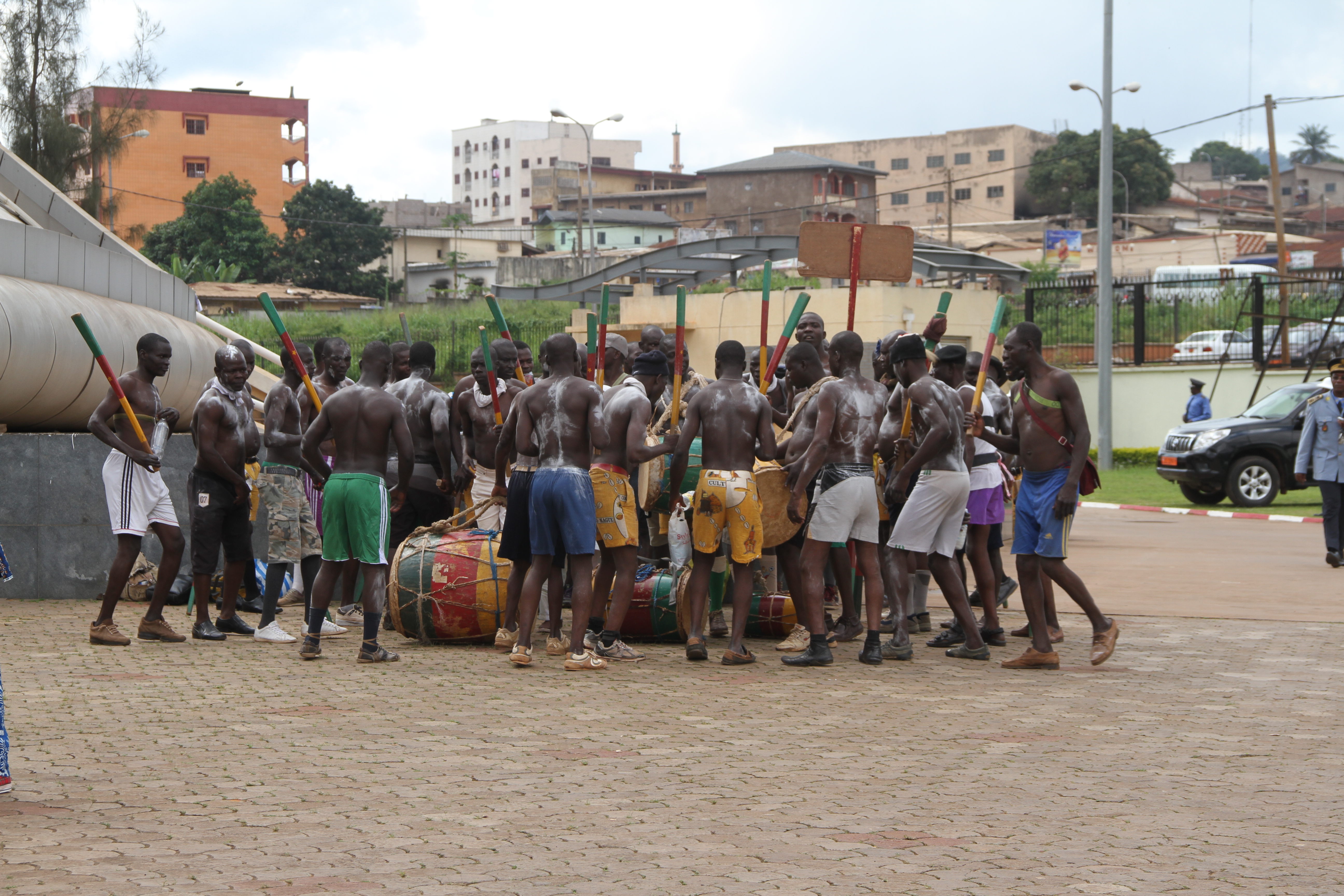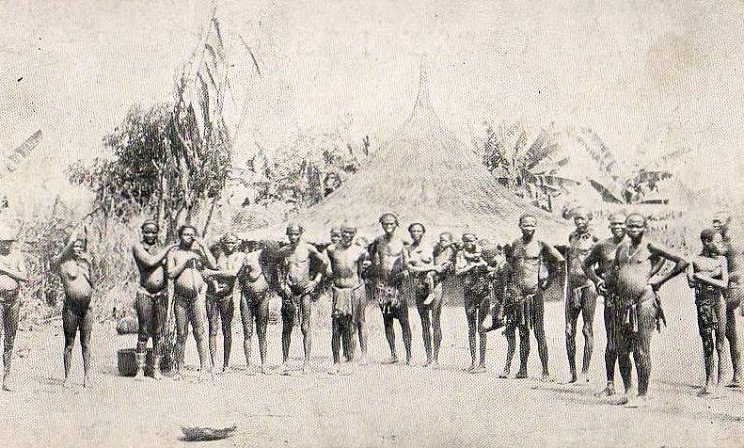|
Adamawa Region
The Adamawa Region (french: Région de l'Adamaoua) is a constituent region of the Republic of Cameroon. It borders the Centre and East regions to the south, the Northwest and West regions to the southwest, Nigeria to the west, the Central African Republic (CAR) to the east, and the North Region to the north. This mountainous area forms the barrier between Cameroon's forested south and savanna north. At almost 64,000 km2 in land area, the Adamawa is the third largest of Cameroon's ten regions. The land is rugged and sparsely populated, however, as most is devoted to the rearing of cattle. The Muslim Fulbe (Fulani) form the major ethnic group, though Tikar, Gbaya, and other peoples are present in lesser numbers. History Early population movements The Adamawa's oldest populations were various Paleo-Sudanese peoples. These were mostly displaced or absorbed by invading Sudanese groups in the 8th or 9th century. These included the Mbum (Mboum), Ndoro (Dourou), Kutin, (Ko ... [...More Info...] [...Related Items...] OR: [Wikipedia] [Google] [Baidu] |
Divisions Of Cameroon
The Regions of Cameroon are divided into 58 divisions or departments. The divisions are further sub-divided into sub-divisions (''arrondissements'') and districts. The divisions are listed below, by province. The constitution divides Cameroon into 10 semi-autonomous regions, each under the administration of an elected Regional Council. A presidential decree of 12 November 2008 officially instigated the change from provinces to regions. Each region is headed by a presidentially appointed governor. These leaders are charged with implementing the will of the president, reporting on the general mood and conditions of the regions, administering the civil service, keeping the peace, and overseeing the heads of the smaller administrative units. Governors have broad powers: they may order propaganda in their area and call in the army, gendarmes, and police. All local government officials are employees of the central government's Ministry of Territorial Administration, from which loca ... [...More Info...] [...Related Items...] OR: [Wikipedia] [Google] [Baidu] |
North Region (Cameroon)
The North Region (french: Région du Nord) makes up 66,090 km² of the northern half of The Republic of Cameroon. Neighbouring territories include the Far North Region to the north, the Adamawa Region to the south, Nigeria to the west, Chad to the east, and Central African Republic to the southeast. The city of Garoua is both the political and industrial capital. Garoua is Cameroon's third largest port, despite the fact that the Bénoué River upon which it relies is only navigable for short periods of the year. Major ethnic groups include the Fula or Fulani ( ff, Fulɓe; french: Peul, links=no), who are Islamic pastoralists, and numerous Muslim and animist speakers of Adamawa, Chadic, and Nilo-Saharan languages. French is the language of formal education, and Fulfulde, the language of the Fulbe, is widespread as a ''lingua franca''. 2008 Presidential Decree In 2008, the President of the Republic of Cameroon, President Paul Biya signed decrees abolishing "Provinces" a ... [...More Info...] [...Related Items...] OR: [Wikipedia] [Google] [Baidu] |
Tupuri People
The Tupuri are an ethnic group in Cameroon and Chad. They speak a language called Tupuri, which had 125,000 speakers in Cameroon at an unspecified date and 90,785 speakers in Chad in 1993. There were 215,466 of them in Chad in 2009. In Cameroon, the Tupuri live east of Kaélé in the Kaele division and in the Kar-Hay subdivision of the Mayo-Danay division of the Far North Province. In Chad, Tupuri live near Fianga, Fianga Subprefecture, Mayo-Kebbi Prefecture in the southwest of the country. The Tupuri are known for a dance called the ''gourna'', "the dance of the cock", which involves the dancers forming a circle and holding long sticks. The Tupuri political and religious life is headed by the Wang Doré The Wang Doré or Wang Kulu is the chief religious and political figure of the Tupuri people. Based in the village of Doré near the Chadian town of Fianga, the Wang Doré have traditionally acted as the kings of the Tupuri, with the areas under ..., the traditional Kings ... [...More Info...] [...Related Items...] OR: [Wikipedia] [Google] [Baidu] |
Mundang
Mundang is an Mbum language of southern Chad and northern Cameroon. The Gelama dialect of Cameroon may be a separate language. Distribution Mundang, spoken in Cameroon by 44,700 speakers (SIL 1982), is mainly spoken in Mayo-Kani department, Far North Region, in the communes of Mindif, Moulvouday, and Kaélé. It is also spoken to a lesser extent in the south of Mayo-Kebi, in the east of Bibemi commune (Bénoué Bénoué is a department of North Province in Cameroon. The department covers an area of 13,614 km and as of 2005 had a total population of 1,781,955. The capital of the department lies at Garoua. Subdivisions The department is divided a ... department, Northern Region), towards the Chadian border. Mundang of Lere (in Chad) and Mundang of Cameroon (centered in Lara and Kaélé) are highly similar. Writing System Nasalization is marked by a tilde: ã, ẽ, ə̃, ĩ, õ References Languages of Chad Languages of Cameroon Mbum languages {{Atl ... [...More Info...] [...Related Items...] OR: [Wikipedia] [Google] [Baidu] |
Fali People
The Fali people (called the Bana in Nigeria)"Fali," ''The Peoples of Africa: An Ethnohistorical Dictionary'' (1996) (James Stuart Olson, editor). Greenwood : p. 174-175. are any of several small ethnic groups of Africa. The Fali are concentrated in mountainous areas of northern Cameroon, but some also live in northeastern Nigeria."Fali," ''Almanac of African Peoples and Nations'' (1999) (Muḥammad Zuhdī Yakan, editor). Transaction: p. 309."Fali," ''Encyclopedia of the Peoples of Africa and the Middle East, Volume 1'' (2009) (Jamie Stokes, editor). Infobase: p. 225. The Fali are composed of four major groups, each corresponding to a geographic region: The Bossoum Fali, the Kangou Fali, the Peske–Bori Fali, and the Tingelin Fali."Fali," ''Almanac of African Peoples and Nations'' (1999) (Muḥammad Zuhdī Yakan, editor). Transaction: p. 309. The Fali in Cameroon have been described as being centered on Garoua as well as the rocky Plateau, plateaus and peaks of the Adamawa Region, ... [...More Info...] [...Related Items...] OR: [Wikipedia] [Google] [Baidu] |
Chamba People
The Chamba are a significant ethnic group in the north eastern Nigeria. The Chamba are located between present day Nigeria and Cameroon. The closest Chamba neighbours are the Mumuye, the Jukun and Kutep people. In Cameroon, the successors of Leko and chamba speakers are divided into several states: Bali Nyonga, Bali Kumbat, Bali-Gham, Bali-Gangsin, and Bali-Gashu. The are two ethnic groups in Ghana and Togo also called Chamba, but they are ethnically distinct. The Chamba are identified through their own language, beliefs, culture, and art. Language The Chamba people, also known as Samba, Tchamba, Tsamba, Daka and Chamba-Ndagan, are an African ethnic group found in the Gongola State of east-central Nigeria and neighboring parts of north Cameroon. They speak two distantly related languages: Chamba Leko, of the Leko–Nimbari languages, and Chamba Daka, of the Dakoid languages, both of which are Niger-Congo languages.;Richard Fardon, ''Raiders & refugees: trends in Chamba pol ... [...More Info...] [...Related Items...] OR: [Wikipedia] [Google] [Baidu] |
Gbaya People
The Gbaya, also Gbeya or Baya, are a people of western region of Central African Republic, east-central Cameroon, the north of the Republic of Congo, and the northwest of the Democratic Republic of Congo. In the first half of the 20th century, the Gbaya were involved in several revolt attempts against German and then French colonial rule. In rural areas, the Gbaya cultivate mainly maize, cassava, yams, peanuts, tobacco, coffee and rice, the latter two of which were introduced by the French. Today, many of the Gbaya people are Christians, though witchcraft is practiced, known as ''dua''. History Gbaya people have been present in Central Africa since at least the 16th century. Archaeological researches have determined their place of origin to be located somewhere in the lower valley of the Lobaye River. During the early 19th century, several Gbaya tribes migrated toward the Eastern area of whats is now Cameroon. During the 19th century, a series of wars opposed Gbaya tribes to Ful ... [...More Info...] [...Related Items...] OR: [Wikipedia] [Google] [Baidu] |
Tikar
The Tikar (also Tikari, Tige, Tigar, Tigre, Tikali) are a central African people who inhabit the Western High Plateau in Cameroon. They are known as great artisans and storytellers. Once a nomadic people, some oral traditions trace the origin of the Tikar people to the Nile River Valley in present-day Sudan. Such ethnic groups were referred to in the 1969 official statistics as "Semi-Bantus" and "Sudanese Negroes." They speak a Northern Bantoid language called Tikar. One of the few African people who practiced a monotheistic traditional religion, the Tikar refer to God the Creator by the name Nyuy. They also have an extensive spiritual system of ancestral reverence. The current population of Tikar in Cameroon is approximately 168,000-173,000. This is a great difference from other enslaved and trafficked ethnic groups like the Kirdi, who still number around 15 million people. This could be due to the high number of Tikar people who were kidnapped and sold into slavery in the Amer ... [...More Info...] [...Related Items...] OR: [Wikipedia] [Google] [Baidu] |
Fula People
The Fula, Fulani, or Fulɓe people ( ff, Fulɓe, ; french: Peul, links=no; ha, Fulani or Hilani; pt, Fula, links=no; wo, Pël; bm, Fulaw) are one of the largest ethnic groups in the Sahel and West Africa, widely dispersed across the region. Inhabiting many countries, they live mainly in West Africa and northern parts of Central Africa, South Sudan, Darfur, and regions near the Red Sea coast in Sudan. The approximate number of Fula people is unknown due to clashing definitions regarding Fula ethnicity. Various estimates put the figure between 25 and 40 million people worldwide. A significant proportion of the Fula – a third, or an estimated 12 to 13 million – are pastoralism, pastoralists, and their ethnic group has the largest nomadic pastoral community in the world., Quote: The Fulani form the largest pastoral nomadic group in the world. The Bororo'en are noted for the size of their cattle herds. In addition to fully nomadic groups, however, there are also semisedentary ... [...More Info...] [...Related Items...] OR: [Wikipedia] [Google] [Baidu] |





